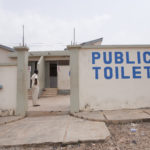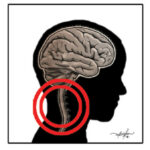It’s yellow fever – NCDC
Residents of Ibadan, the Oyo State capital, went into a panic mode on November 10 following reported cases of deaths due to a ‘strange ailment.’
Eleven victims, including women and children, reportedly died as a result of the ‘strange disease,’ which broke out in Ariku and Langun communities of Lagelu Local Government Area of Ibadan.
The caretaker chairman of Lagelu Local Government, Mr Abdullah Kelani, who confirmed the deaths, said a preliminary investigation had revealed that the deaths were due to lack of access to potable water by the affected persons.
But the commissioner for health, Dr Bashir Bello, was quoted as saying the tests carried out on the affected persons were still premature, and that the samples collected were yet to link the strange sickness to cholera.
He, however, confirmed that surveillance and health officers sent to the local government to take samples and assess the situation had reported poor unhygienic and dirty environment where the victims were residing.
While explaining that these could have exposed the victims to all sorts of sickness and infection, Bello said all the persons suffering from the sickness were hospitalised and responding to treatment.
Barely a week after the Ibadan incident, the Kogi State House of Assembly reportedly called on state and federal ministries of health to unravel the cause of the ‘strange disease’ which had killed 50 persons in Olamaboro Local Government Area of the state.
The House made the call during plenary in Lokoja following the adoption of a motion on Urgent Public Importance, raised by Anthony Ujah (APC,Olamaboro), over the strange illness that had claimed over 50 lives.
The lawmaker, who said residents of the affected community were thrown into confusion, explained that the unknown disease came with symptoms such as headache, red eyes, loss of appetite, inability to urinate or defecate, convulsion, and subsequently, death.
He maintained that the cause or nature of the disease was unknown, adding that infected persons died within one week of contracting the ailment.
“The reports reaching my constituency office from the community leaders confirmed that over 50 people between the age of 25 and 40 years have died since September.
More worrisome is that all efforts to get solution using local herbs and treatment at primary health centres with referrals to clinics and hospitals in neighbouring Ogugu and Okpo have been unsuccessful,” he reportedly said.
However, Saka Haruna, the commissioner for health in the state, later denied the claim, saying no one had died of an unknown sickness in the community.
According to him, the state had a well-established network by which disease outbreaks are reported from the community, local government levels to the state level, therefore it was unlikely that an incident of that magnitude could go unnoticed.
896 deaths in 5 months
An analysis of newspaper reports conducted by Daily Trust on Sunday shows that Oyo and Kogi are among nine states where a total of 869 deaths attributed to ‘strange disease’ were reported in February, April, May, June and September this year.
The other states where similar incidents were reported are the Federal Capital Territory (FCT), with 15 deaths in February; Benue State with 4 and 17 deaths, separately reported in April and November; Kano with 150 deaths reported in April, and Yobe State, with the highest deaths reported between May/June at Nguru, Gashua and Damaturu.
Other states where incidents of ‘strange disease’ related deaths were recorded are Enugu (40 deaths) in November; Plateau (105) deaths in May/June; Rivers (11) deaths in May and Delta State (22 deaths) reported in November.
More deaths
In Benue State, no fewer than 17 persons were reported to have died of a strange illness that was said to have broken out at the Okpeilo-Otukpa area in the Ogbadibo Local Government Area on November 9.
The commissioner for health and human service, Dr Emmanuel Ikwulono, reportedly said, “At the time of the receipt of the report yesterday, November 9, 2020, about 17 persons were already said to have died of the illness.
“We currently have one case, which was brought to the Benue State University Teaching Hospital, Makurdi by a relative of the patient. Others are receiving treatment in different hospitals.”
The commissioner said symptoms of the strange illness included fever, abdominal pain and general body weakness, with some stooling and vomiting, with tinges of blood.
Similarly, not less than 40 people were reported to have been killed by a strange disease in Igbo-Eze North Local Government Area of Enugu State in November this year.
Residents said victims were mostly youth and reported weakness, fever and headache before passing on.
“It started more than a month ago from Uni Ete, a village in Ete, that has a common boundary with Umuokpu. There were deaths of youths who might just have headaches, and before you rush them to hospital, they died. Sometimes they vomit and die,” a youth in the affected community was quoted as saying.
But the Enugu State Government reportedly linked the strange illness in Igbo-Eze North Local Government Area of the state to yellow fever.
Louis Amoke, spokesperson of the governor, quoted Emmanuel Obi, the state’s commissioner for health as saying the disease was confirmed through verifiable diagnostic tests.
“Yellow fever is not a new disease but one of public health importance internationally and in Nigeria. It is one of the things controlled in the Nigerian set of routine and mass immunisable diseases,” Obi said.
He said the state’s Ministry of Health had invited the Nigeria Centre for Disease Control (NCDC) and other partners for a meeting on the situation in order to prevent the disease from spreading to other parts of the state.
Similarly, at least 979 people, including health care workers and high-level officials, reportedly died in Kano State last September due to a mysterious disease.
Minister of Health Osagie Ehanire, who confirmed this, said all patients, including high-level officials and health staff, died only within five weeks.
Contrary to initial reports, the government claimed that the “mysterious disease’’ was not COVID-19, and the deaths were due to other deadly diseases such as meningitis, hypertension, diabetes and malaria.
It’s yellow fever – NCDC
The Nigeria Centre for Disease Control (NCDC) has linked the strange illnesses in Delta, Enugu, Benue and Bauchi states to outbreak of yellow fever.
Sources at the NCDC said investigations were still ongoing in some states with reported strange illnesses, such as Oyo and Kogi.
Confirming the yellow fever outbreak earlier in the month, the NCDC said between November 1 and 11, a total of 222 suspected cases, 19 confirmed cases and 76 deaths had been reported from Delta, Enugu, and Bauchi states.
The director-general of the Centre, Dr Chikwe Ihekweazu said, “On November 2 and 3, 2020, the NCDC was notified by the state ministries of health of Delta and Enugu states respectively, of cases presenting with symptoms indicative of a viral hemorrhagic fever. Most cases came with fever, headache and fatigue, jaundice vomiting (with or without blood), among others.
On November 6, 2020, three samples from Delta and one from Enugu tested positive for yellow fever at Irrua Specialist Teaching Hospital Laboratory and NCDC’s National Reference Laboratory, Gaduwa.”
The Centre, in its latest yellow fever situation report published on November 18, said it was currently responding to clusters of yellow fever outbreaks in Delta, Enugu, Bauchi and Benue states, and also supporting the governments of the four states with a response to the disease.
“The NCDC and the National Primary Health Care Development Agency (NPHCDA) are coordinating response activities through the national yellow fever Emergency Operations Centre (EOC), in collaboration with states and partners,” the Centre stated.
Yellow fever is caused by a virus spread through the bite of infected Aedes aegypti mosquitos. Some of those infected develop serious symptoms, including high fever, loss of appetite, nausea, muscle pains, headache, and jaundice (yellowing of the skin and eyes). Some die from the complications of internal bleeding and organ failure.
The NCDC, in the latest yellow fever situation report, also stated that cumulatively, across Nigeria in 2020, a total of 1,558 suspected and 46 confirmed cases have been reported from 481 (62%) local government areas across all states and the FCT so far.
“The 46 confirmed cases were reported from 14 local government areas across eight states: Bauchi (8); Benue (3); Delta (8); Ebonyi (1); Edo (5); Ekiti (1); Enugu (19); Oyo (1),” the Centre stated.

 Join Daily Trust WhatsApp Community For Quick Access To News and Happenings Around You.
Join Daily Trust WhatsApp Community For Quick Access To News and Happenings Around You.

